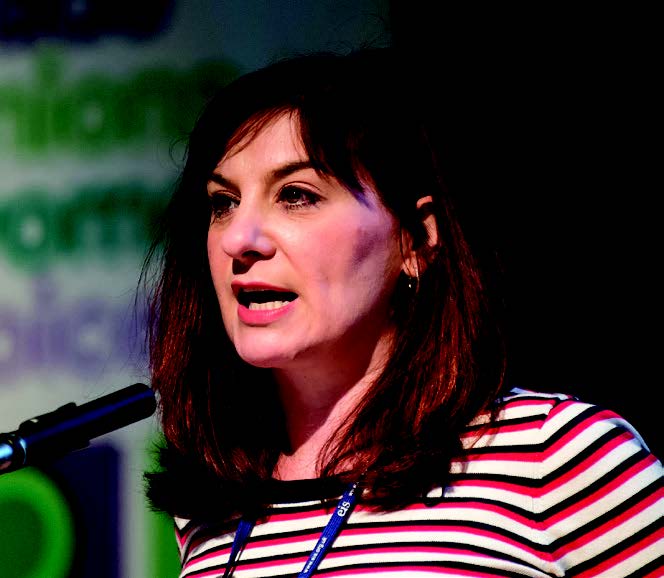While November’s meeting of EIS Council again had a strong focus on Covid-related issues, the issue of this year’s long-delayed pay settlement also prompted a significant amount of discussion.
Salaries Convener Des Morris provided an update to Council on the latest developments at the Scottish Negotiating Committee for Teachers (SNCT). Mr Morris highlighted to Council that the long-awaited ‘improved’ offer from the employers was “essentially the same as the old offer – but with the addition of an extra unconsolidated element of an additional 3 months of the pay increase as a one-off payment” which would amount to an approximate one-off net payment of £90 for a teacher at the top of the main-grade scale, according to EIS calculations.
The consolidated element of the offer continues to amount to a 1.22% pay increase for all teachers, which is significantly below the current rate of inflation. As such, Mr Morris confirmed that a Special Salaries Committee meeting had unanimously rejected the offer, and the SNCT teachers’ panel later the same day had also unanimously rejected the offer. The SNCT Extended Joint Chairs had then met again, where the teachers’ panel had expanded on the reasons for rejecting the offer. Mr Morris highlighted that the Consumer Price Index (CPI) is currently over 4% and is projected to rise to 5% by next April – when we submitted the pay claim via the SNCT last year, CPI was at 0.4%.
Mr Morris continued, “It is clear that COSLA are not going to offer any additional money and, if the offer is to be improved, that additional money will have to come from the Scottish Government. We have made a number of suggestions to COSLA and Scottish Government as to how they can improve the offer. We have expressed a willingness to consider a 2-year pay deal at an appropriate level – a suggestion that was originally proposed by COSLA.”
Mr Morris added, “All along, we have said that we want a reasonable offer that we can put to members. That hasn’t happened yet. When the time comes to consult with members, that consultation could be based on an offer, or on the possibility of industrial action to seek to improve an offer.”
David Farmer (Fife) asked if there was a clear sense of how members in schools were feeling on the matter of pay. Mr Morris replied, “I receive regular emails from members and school Reps. While we clearly are not at the point of having 30,000 people marching on the streets yet, members are increasingly expressing concern about their pay.”
Executive Committee & Covid Issues

Vice President Andrene Bamford updated Council on the successful resolution of the dispute at SRUC, following a period of strike action. There had also been approval of an aggregated statutory strike ballot for EIS-ULA in pursuit of their pay dispute, with the ballot then underway. Ms Bamford also updated Council on the EIS Health & Wellbeing survey, issued the previous week, to which around 10,000 members had already responded. On the 175th Anniversary Working Group, Ms Bamford confirmed that the logo had now been approved, and work had started on the commemorative book with an author having been selected and commissioned. The success of recent EIS COP26 activity was highlighted – the Climate Change webinars had been well attended, and there had been a strong EIS turnout at the Glasgow demo on Saturday during the COP.
General Secretary Larry Flanagan provided an update on Covid matters, telling Council that CERG was now meeting on a fortnightly basis rather than weekly. The EIS understood that there would be no significant change to mitigations prior to Christmas. Mr Flanagan also confirmed that the EIS had pushed very strongly against proposed relaxation of mitigations in October, which had contributed to the Scottish Government changing its plans for relaxation. On the vaccination programme, there was good progress reported in uptake amongst 16-17 year olds, but lower uptake in the 12-15 age group where take-up had stalled at around 55%. The EIS has pushed for better information highlighting benefits of the vaccine to young people and their families. There had also been significant discussion at CERG around potential vaccination of 5-11 year olds – Mr Flanagan reported that the government seemed minded to wait for decision from the JCVI before making any determination on rolling out the vaccination programme to 5-11 year olds.
Susan Quinn (Glasgow) said that there was a need for urgent guidance for branches over what to do where there are significant outbreaks in schools, including what should trigger potential closures of school buildings or moves to blended learning. The General Secretary confirmed that updated guidance would be circulated to Reps.
Allan Crosbie (Edinburgh) urged for the EIS to press Scottish Government on the promotion of the vaccination programme for young people and, also, to re-affirm the position on the use of face coverings in schools.
Education
Convener Susan Quinn told Council that, like other committees, the Education Committee largely continued to focus on Covid recovery. The EIS continues to push the Scottish Government and local authorities for the funding and resources to enable education recovery. A lot of work in the latest meeting of the committee had related to the EIS response to the Muir Review, with a particular focus on the SQA and Education Scotland but also on wider related issues. Ms Quinn also said that the EIS continues to be strong in pushing back against dual assessments – a political decision had been taken to push ahead with an exam diet, so teachers must not be expected to also gather additional evidence of attainment as a safeguard against exams potentially being cancelled at short notice.
Employment Relations
Convener David Baxter reported that the EIS Benevolent Fund had been pleased to receive a £25,000 donation from EIS Financial Services. Mr Baxter noted that significant surplus had been noted in the Benevolent accounts over the past year, and this money will be reinvested which will allow the Fund to do more for members in the future.
Equality
Convener Nicola Fisher reported that the EIS Equality related Learning Programme for 2021-2022 was now underway, with information available on the EIS website. Ms Fisher said that it was important that members from the wider membership attend these events, not just the members affected (such as BAME members or LGBTI+ members). Ms Fisher said that Stage 2 of Equality Reps’ training has taken place, leading to 9 new members becoming fully accredited Equality Reps. EIS PACT training had been undertaken by 12 members, and the next stage of the project will be to explore how these members can disseminate what they have learned to the wider membership, said Ms Fisher.
Salaries

Convener Des Morris confirmed that the SNCT had now reached agreement on a Sabbaticals programme – see article on P22 of this SEJ for more information.
On class contact time reduction, Mr Morris said that the SNCT was awaiting a paper from the Scottish Government in relation to their manifesto commitments on recruiting 3500 additional teachers and reducing class-contact time.
Motions
A wide range of Motions were introduced and approved by Council, including: COP26 and Climate Change (mover: Penny Gower); establishment of a Climate Network (Donny Gluckstein); supporting people in Afghanistan (Nicola Fisher); HMIE inspections (Tom Britton); HMIE inspections and industrial action (Alison Murphy); Supporting teacher unions in Afghanistan (Donny Gluckstein).
